When modeling a reinforced concrete rib with a masonry wall above, there is the risk that the rib is underdesigned if the structural behavior of the masonry is not correctly considered and the connection between the masonry wall and downstand beam is not modeled sufficiently accurately. This article deals with this issue and shows the possible modeling options of such a structure. In this example, the reinforcement is determined only from the internal forces and without secondary minimum reinforcement.
KB 001598 | Modeling and Determination of Internal forces for T-Beam with Masonry Wall...
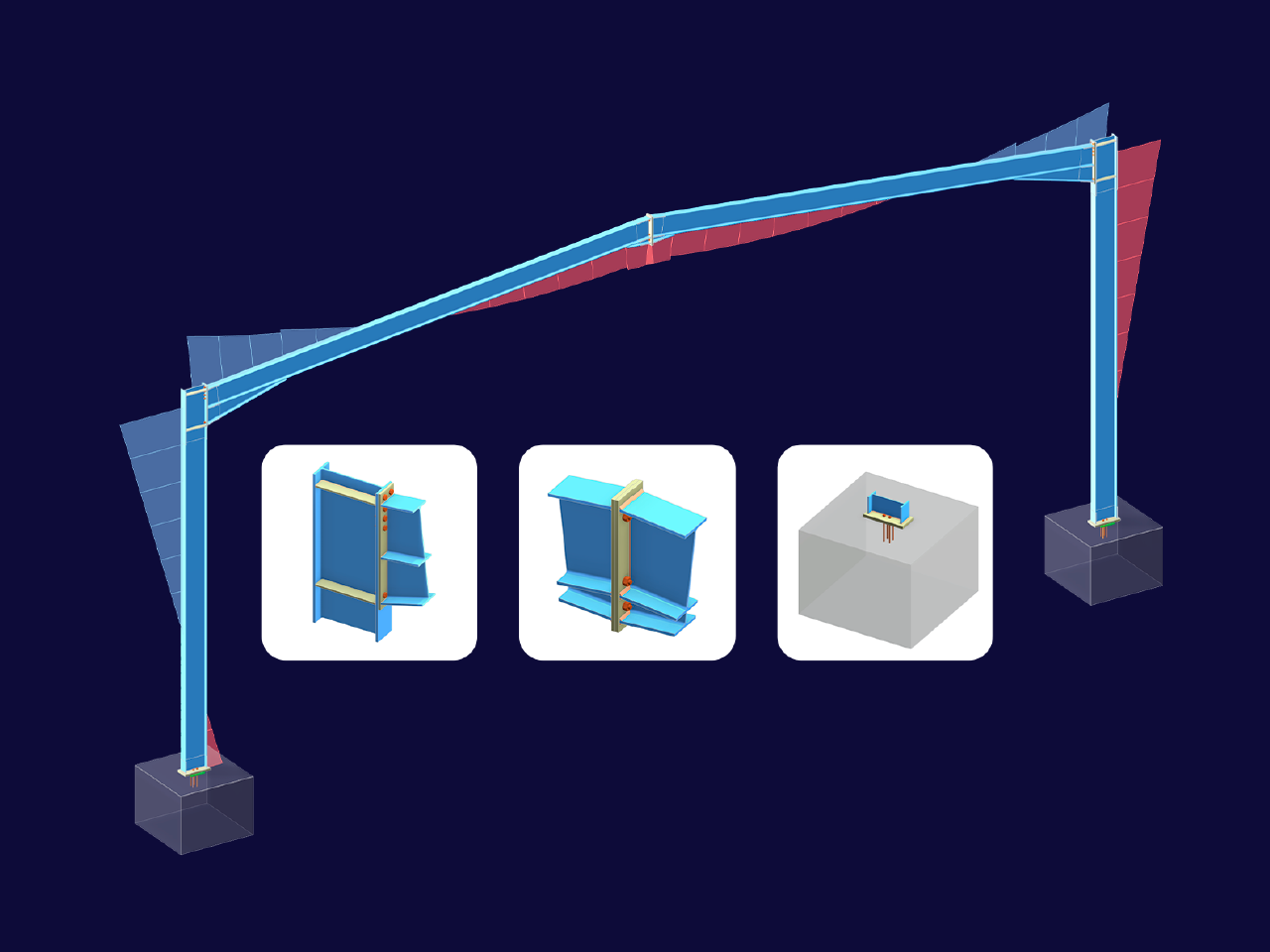
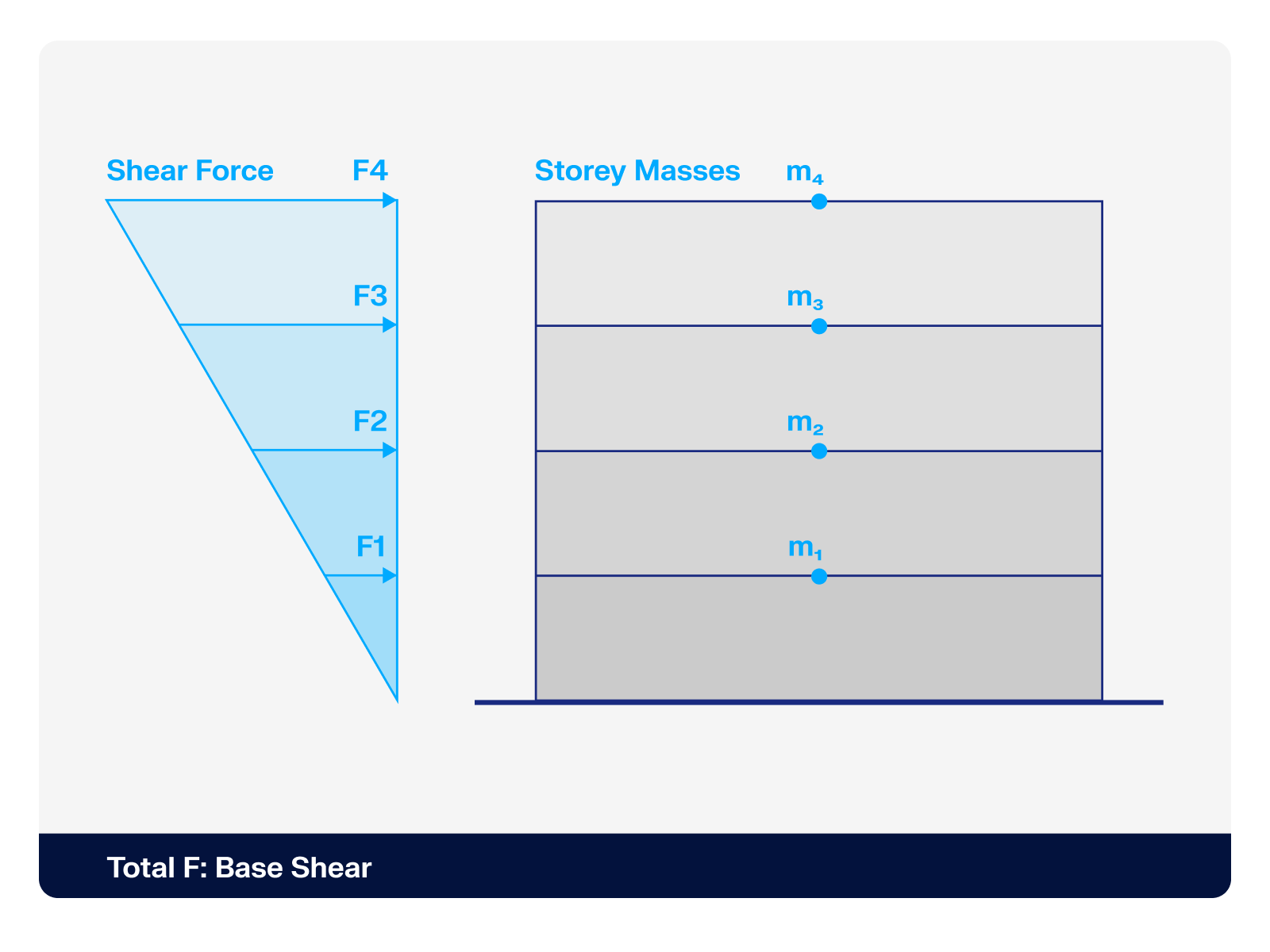.png?mw=512&hash=4a84cbc5b1eacf1afb4217e8e43c5cb50ed8d827)
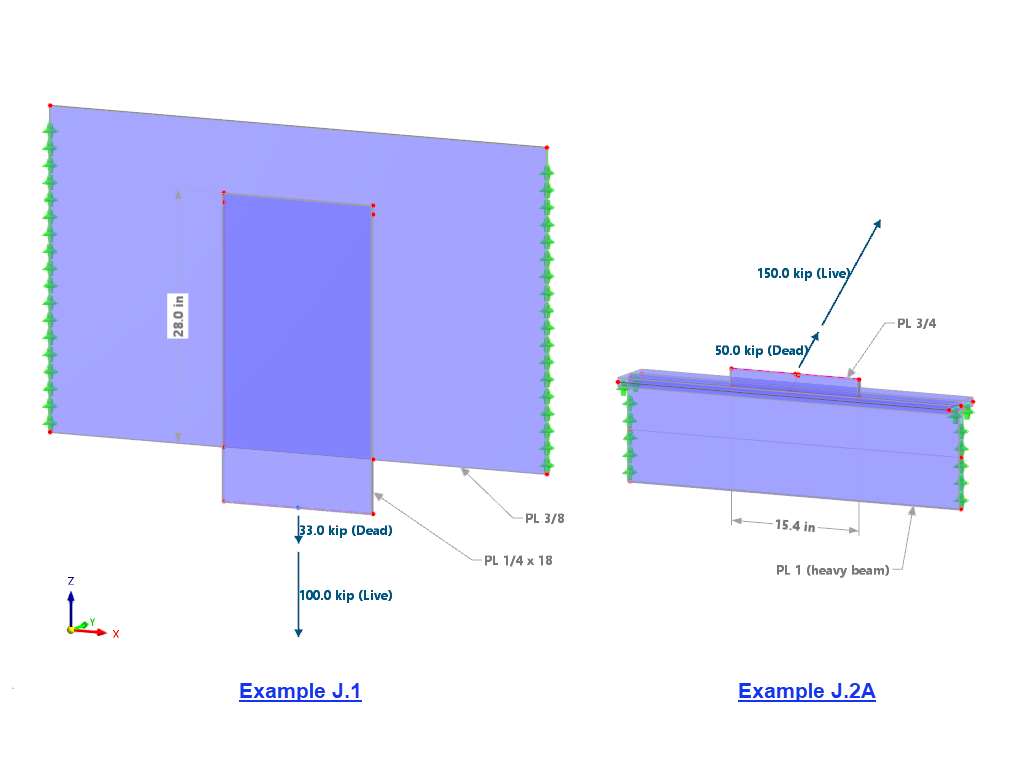
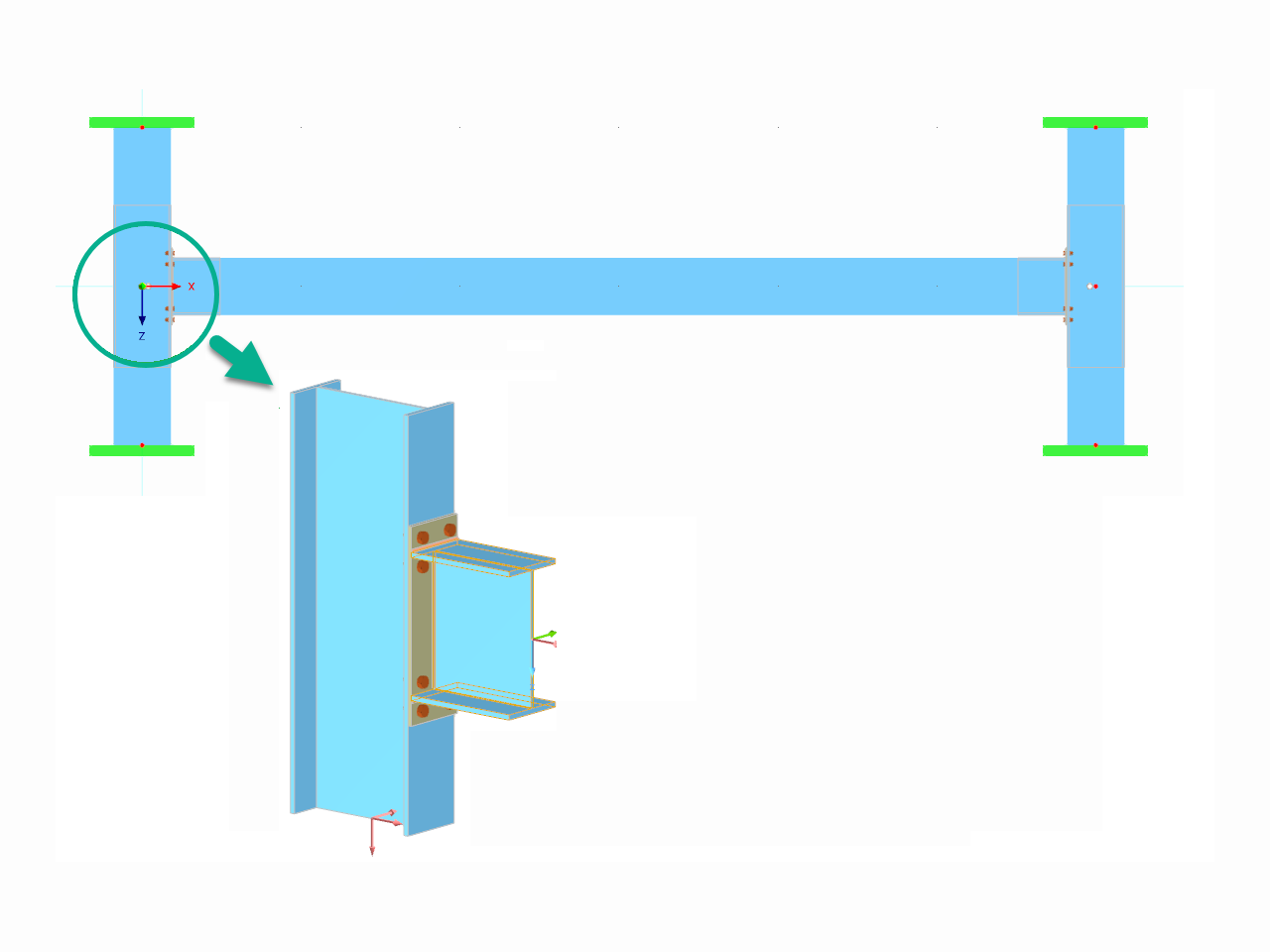

In RFEM 6, there is an option of a hierarchical control between the load transfer surfaces and floors in Building Model. This also allows you to create walls made of load transfer surfaces in order to consider curtain walls in the facade, for example.
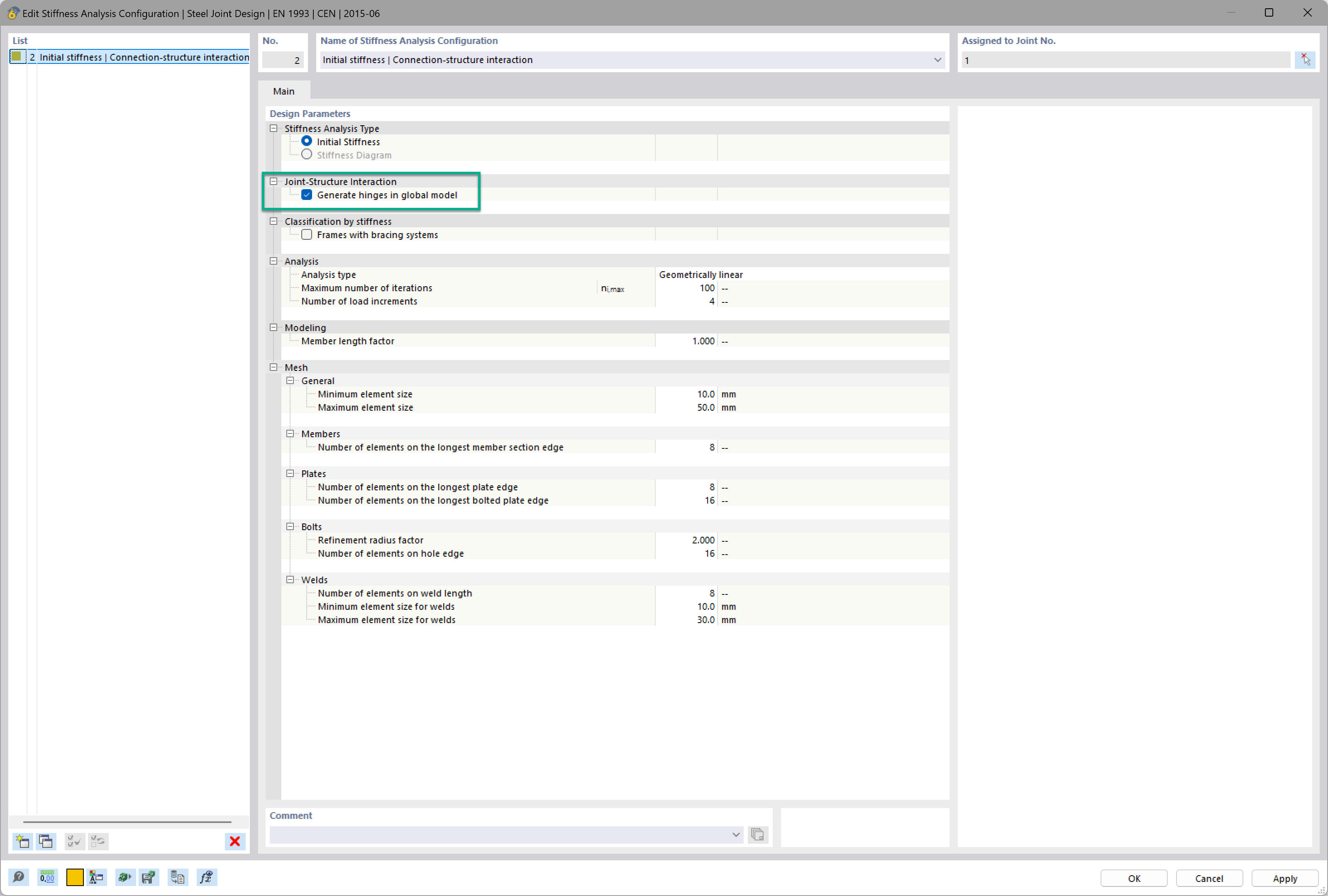
Want to automatically consider steel joint stiffness in your global RFEM model? Utilize the Steel Joints add-on!
Activate joint-structure interaction in the stiffness analysis of your steel joints. Hinges with springs are then automatically generated in the global model and included in subsequent calculations.

For the combination wizards and the load case classification of road bridges, the standard EN 1991-2:2003 based on the standard EN 1990 is implemented in RFEM and RSTAB.

When generating shear walls and deep beams, you can assign not only surfaces and cells, but also members.
In the Steel Joints add-on, I get high utilization ratios for preloaded bolts in the tension design. Where do these high utilization ratios come from and how can I evaluate the load-bearing reserves of the bolt?
How can I find RWIND results such as forces data in ParaView?
How can treating a connection as fully rigid result in an uneconomical design?
How can I obtain wind force coefficient in RWIND?
Is it possible to consider shear panels and rotational restraints in the global calculation?
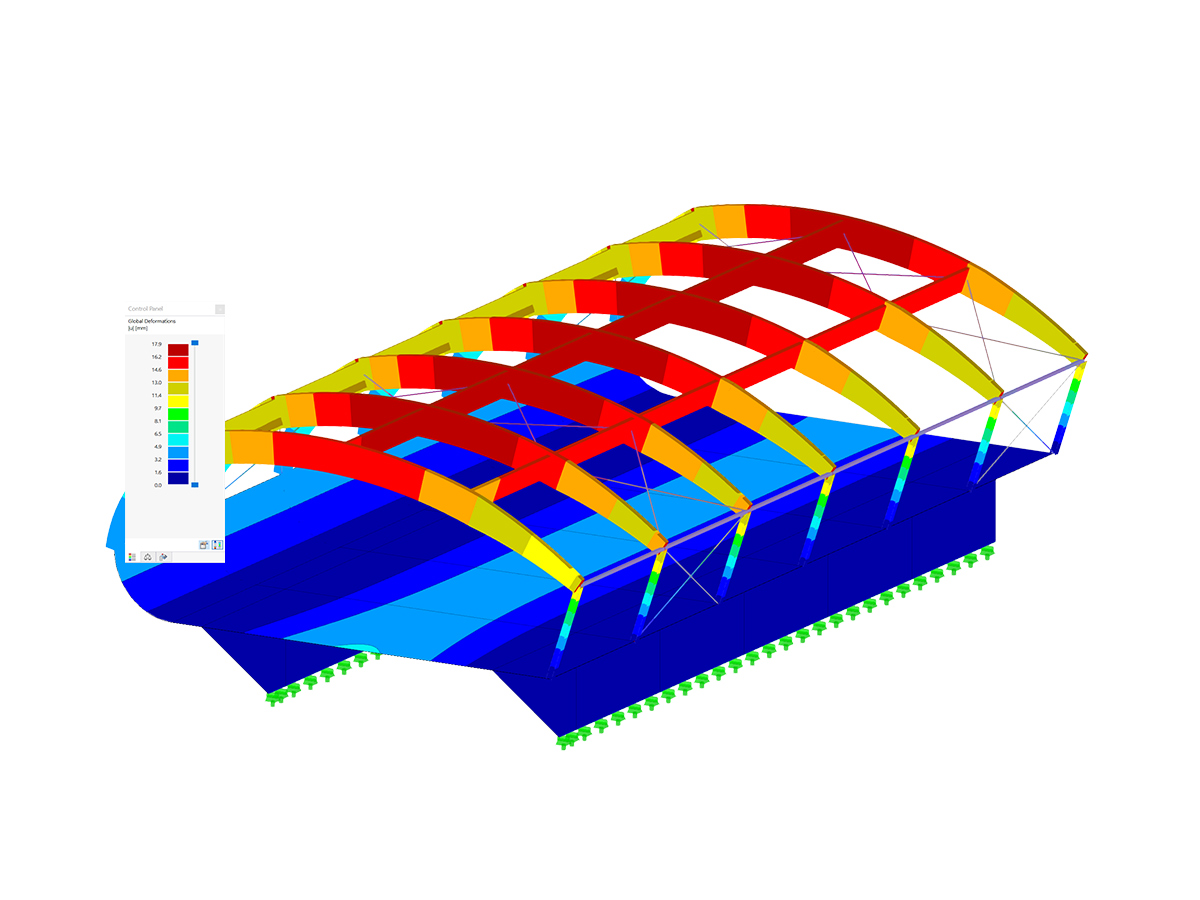
The new generation of 3D FEA software is used for the structural analysis of members, surfaces, and solids.
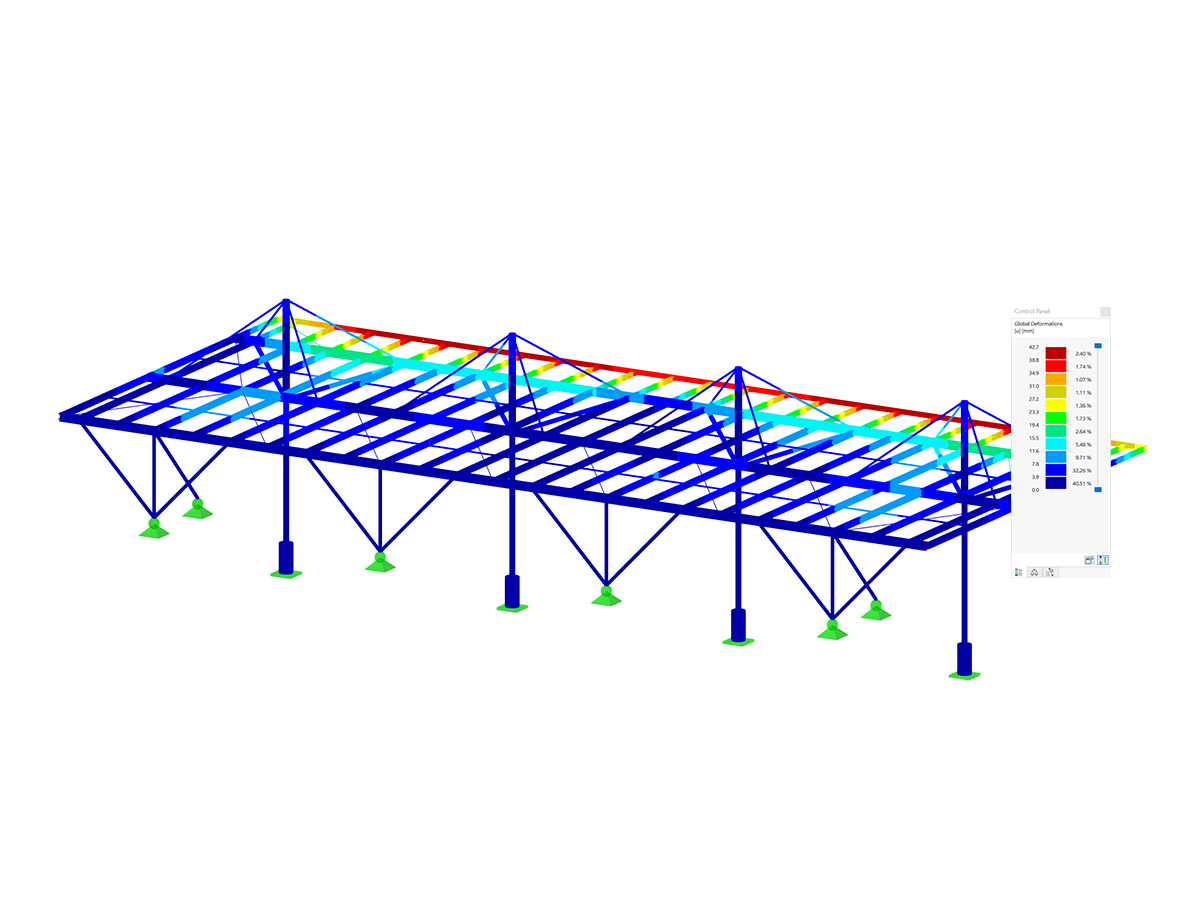
The Steel Design add-on performs the ultimate and serviceability limit state design checks of steel members according to various standards.
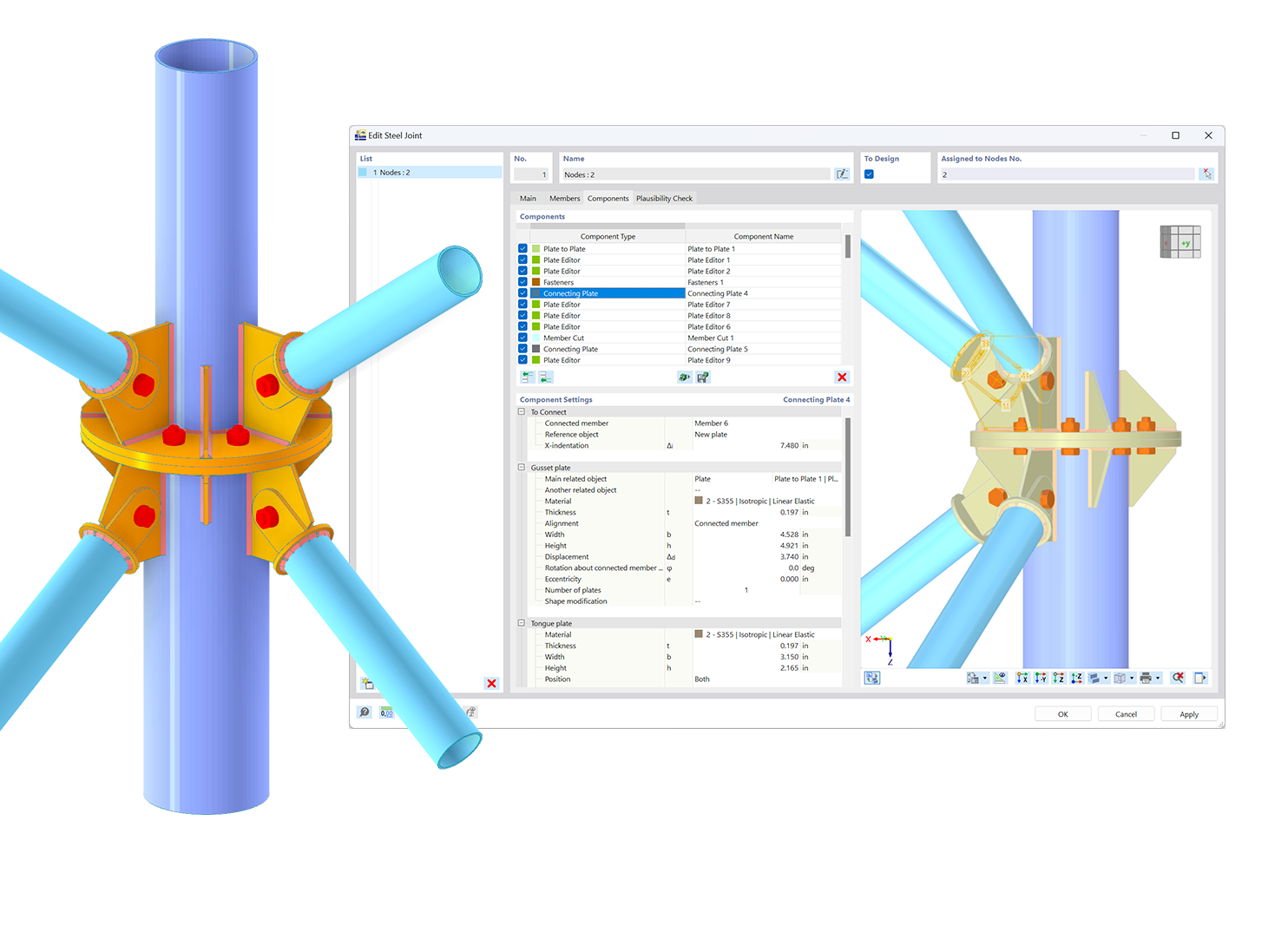.png?mw=600&hash=49b6a289915d28aa461360f7308b092631b1446e)
The Steel Joints add-on for RFEM allows you to analyze steel connections using an FE model. The FE model is generated automatically in the background and can be controlled via the simple and familiar input of components.
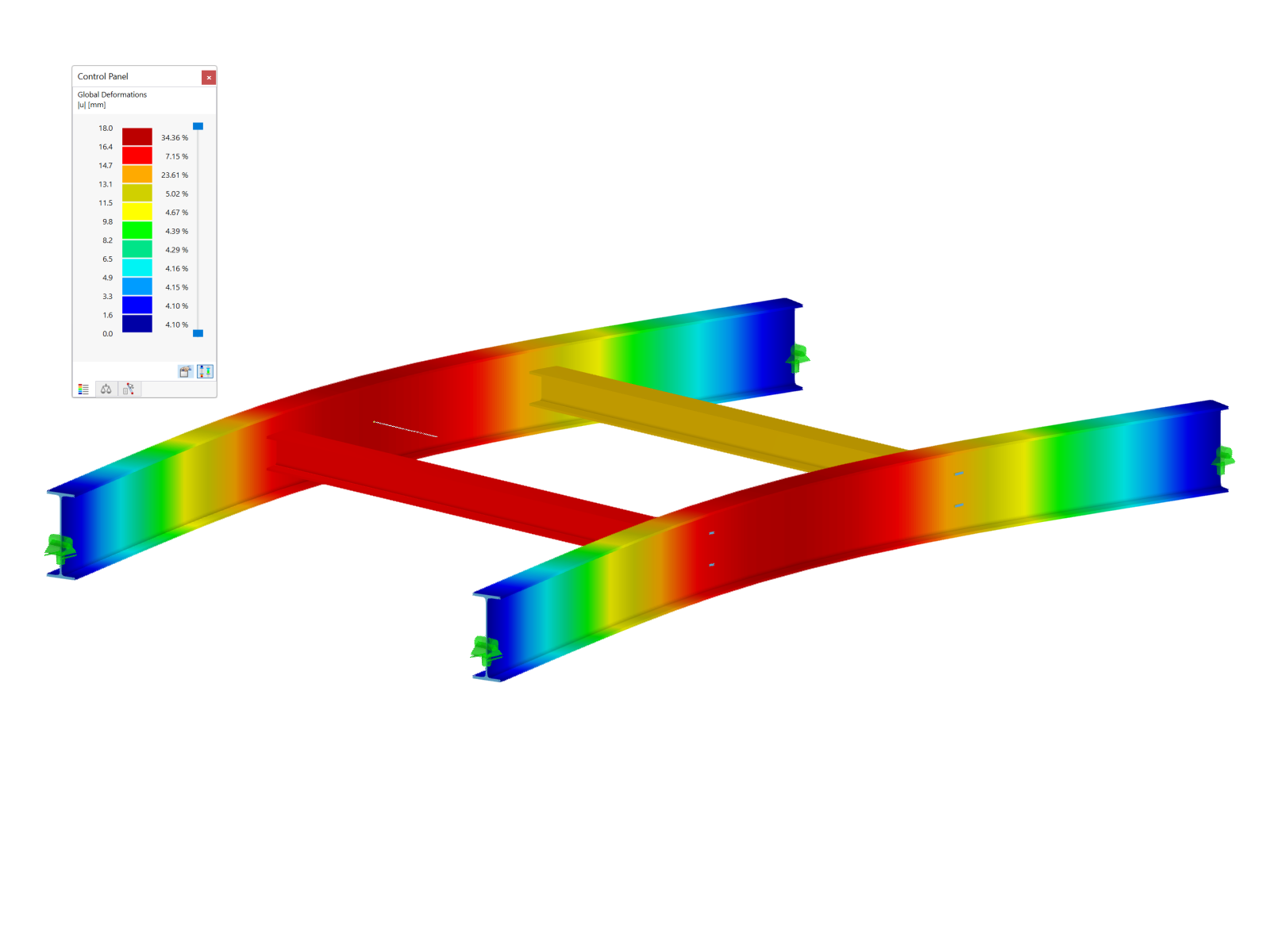
The Torsional Warping (7 DOF) add-on allows you to consider cross-section warping as an additional degree of freedom.
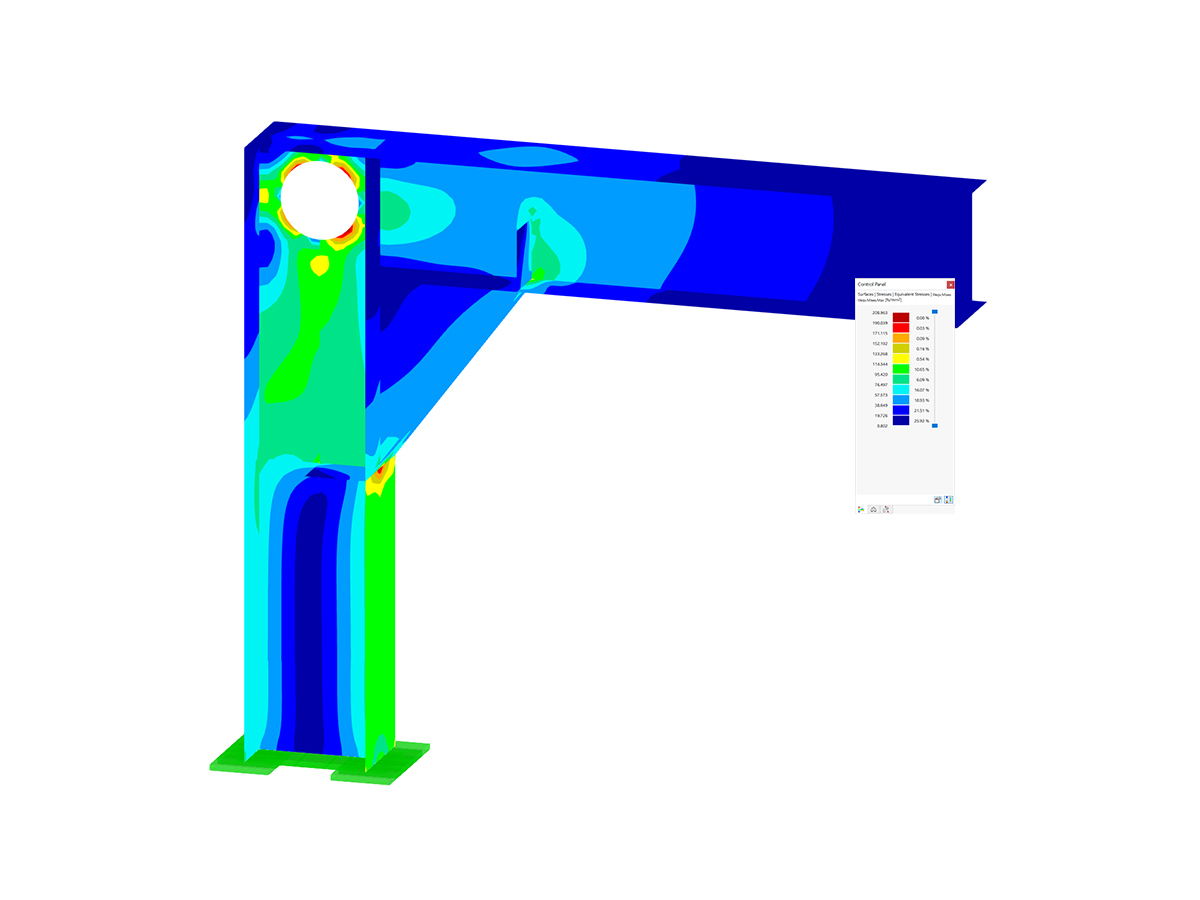
The Nonlinear Material Behavior add-on allows you to consider material nonlinearities in RFEM for example, isotropic plastic, orthotropic plastic, isotropic damage).
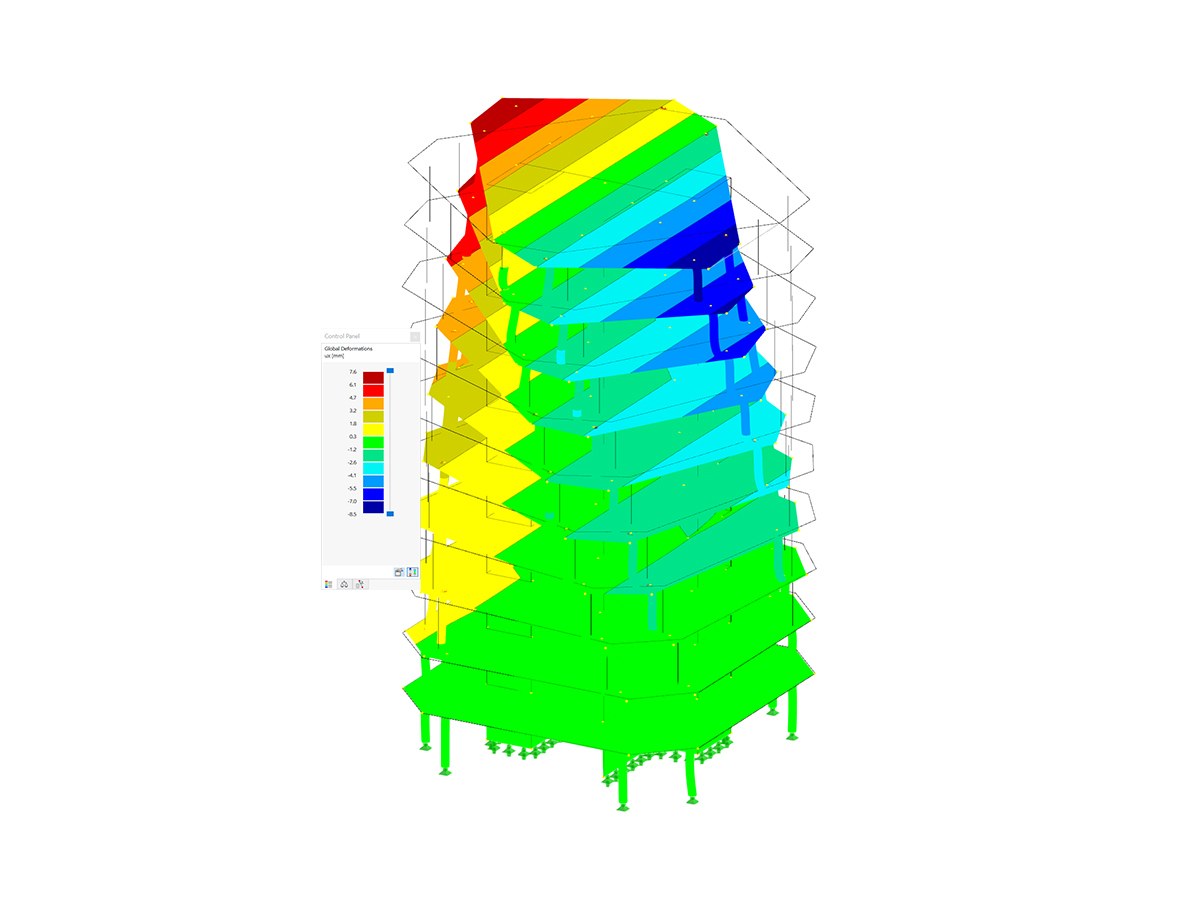
The Structure Stability add-on performs stability analysis of structures. It determines critical load factors and the corresponding stability modes.
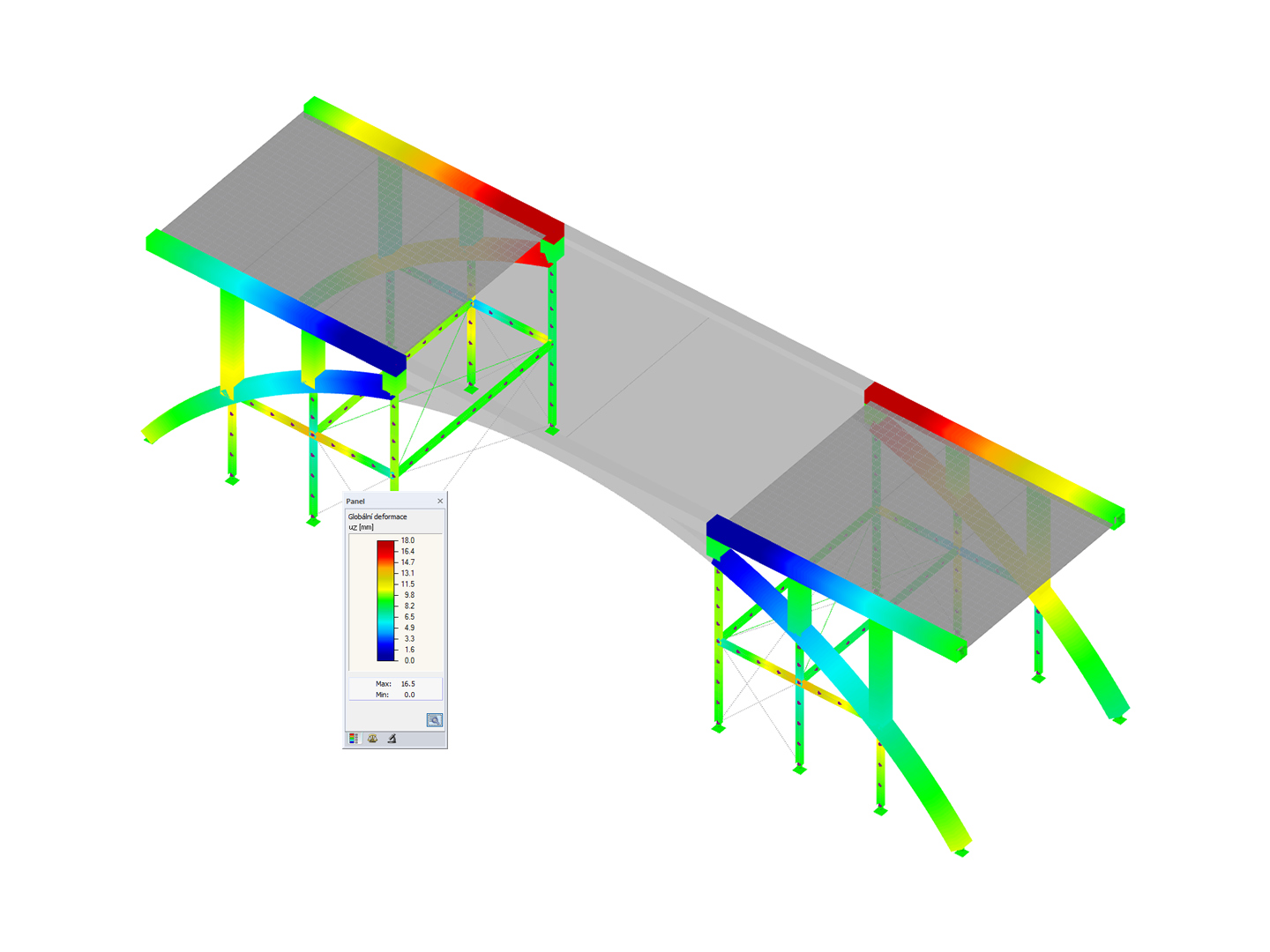
The Construction Stages Analysis (CSA) add-on allows for considering the construction process of structures (member, surface, and solid structures) in RFEM.

The Time-Dependent Analysis (TDA) add-on allows you to consider the time-dependent material behavior of members and surfaces. The long-term effects, such as creep, shrinkage, and aging, can influence the distribution of internal forces, depending on the structure.
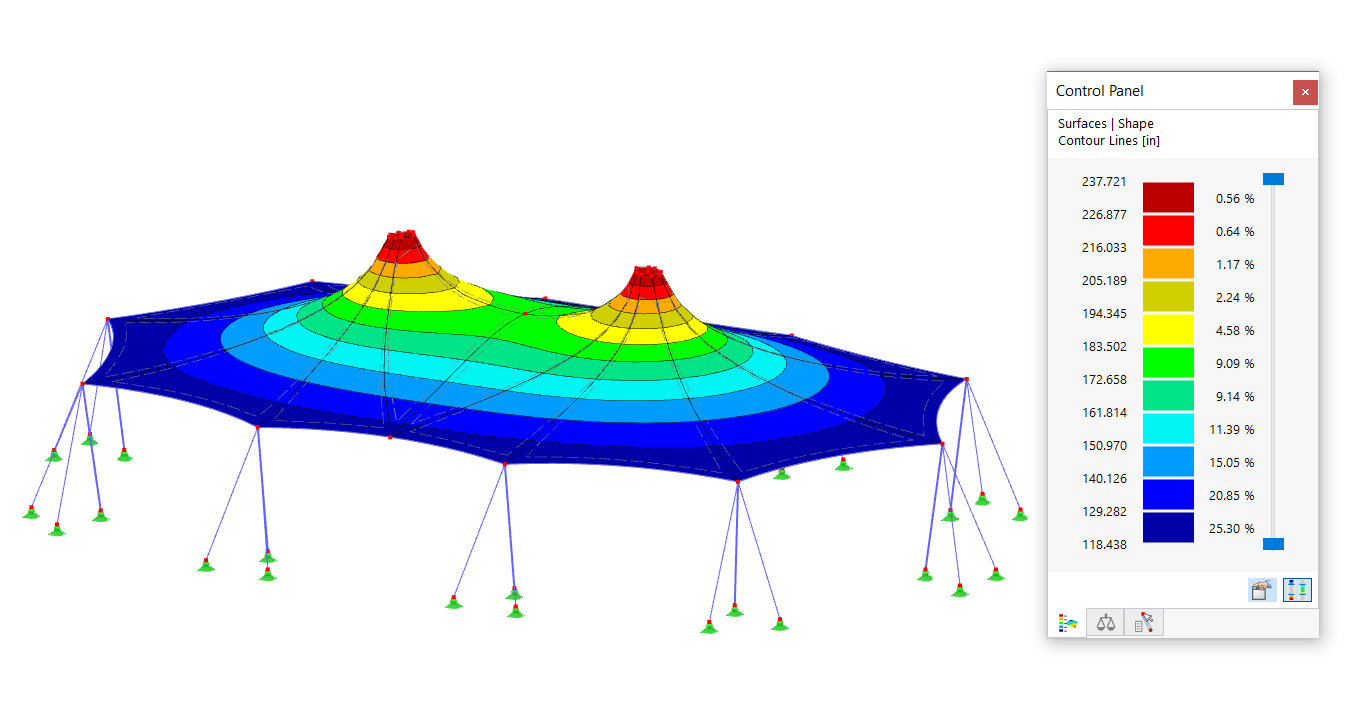
The Form-Finding add-on finds the optimal shape of members subjected to axial forces and tension-loaded surface models. The shape is determined by the equilibrium between the member axial force or the membrane stress and the existing boundary conditions.
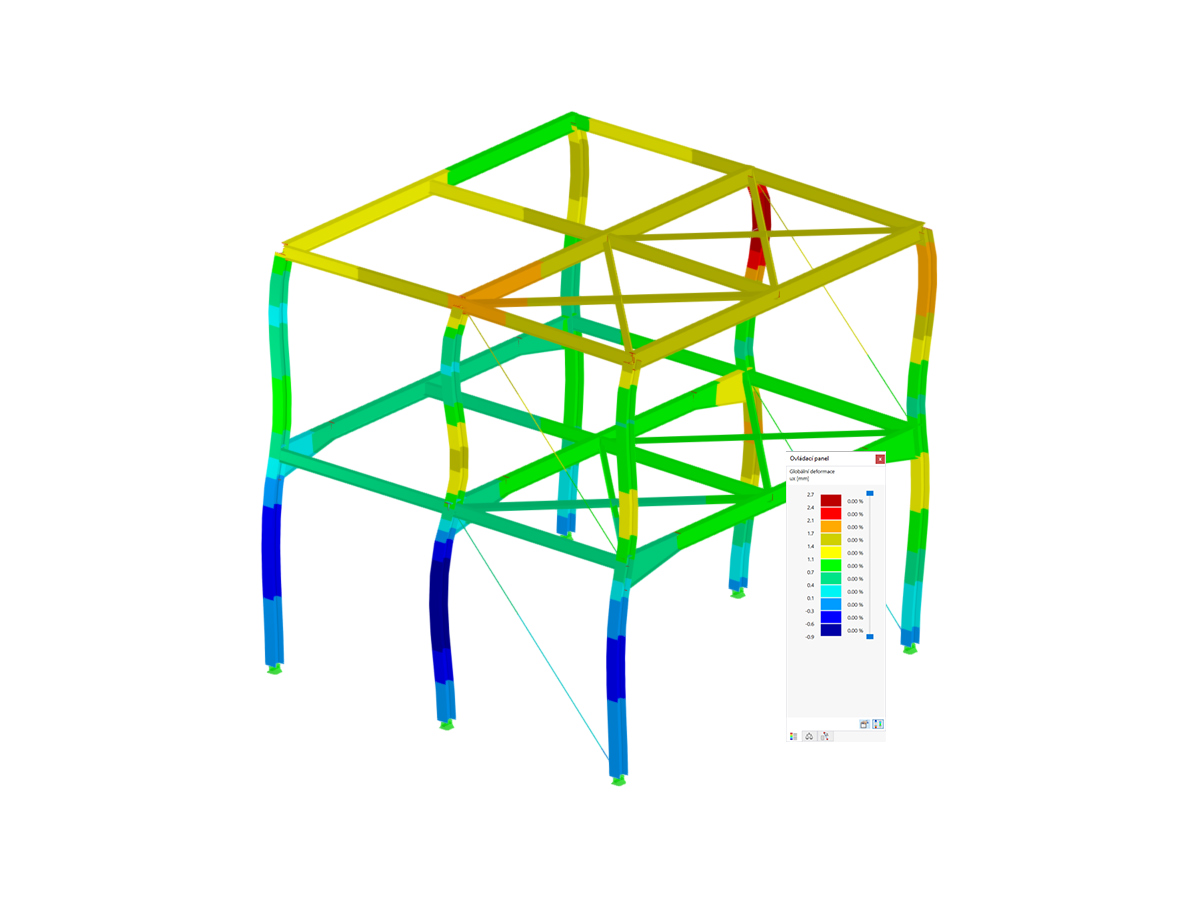
The Modal Analysis add-on allows for the calculation of eigenvalues, natural frequencies, and natural periods for member, surface, and solid models.
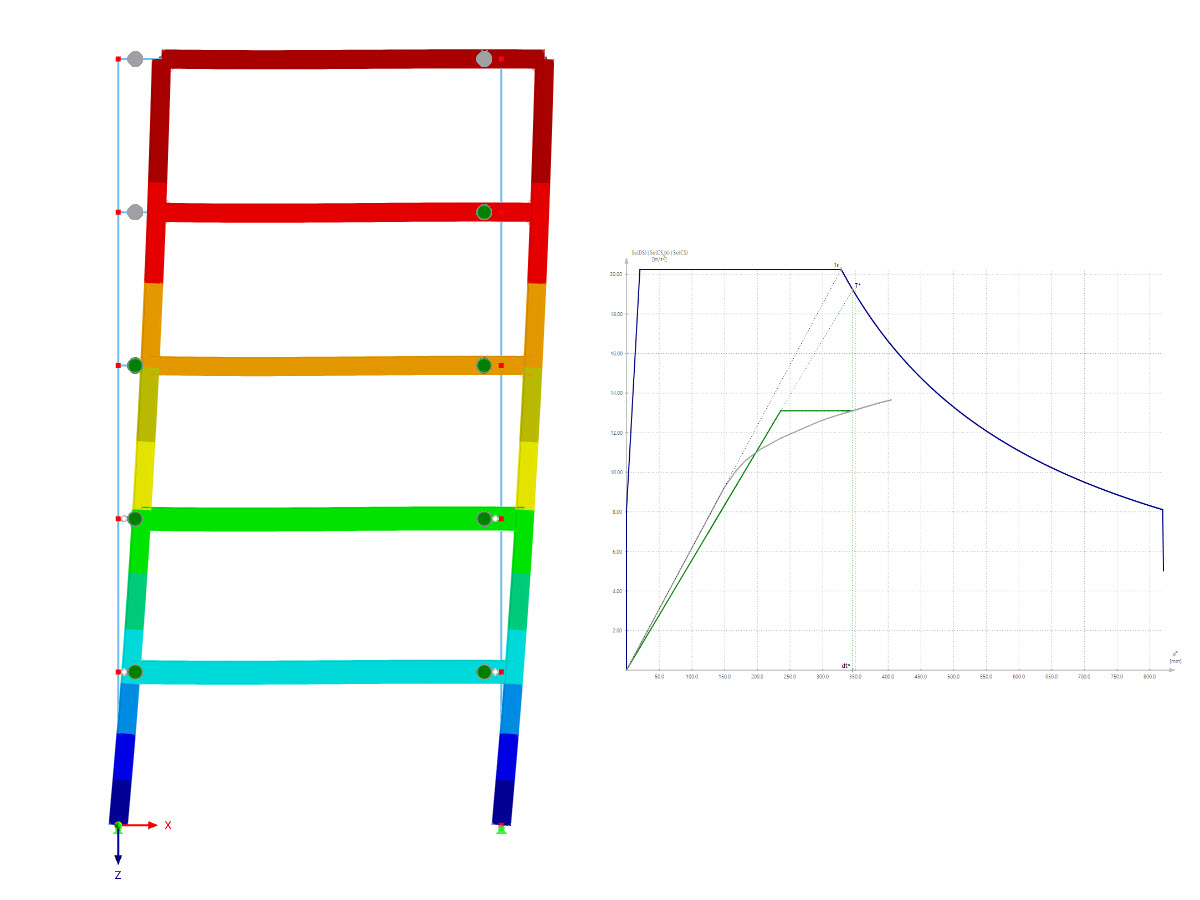
Using the Pushover Analysis add-on, you can analyze the seismic actions on a particular building, and thus assess whether the building can withstand an earthquake.

The Building Model add-on for RFEM allows you to define and manipulate a building using stories. The stories can be adjusted in many ways afterwards. The information about stories and the entire model (center of gravity) is displayed in tables and graphics.
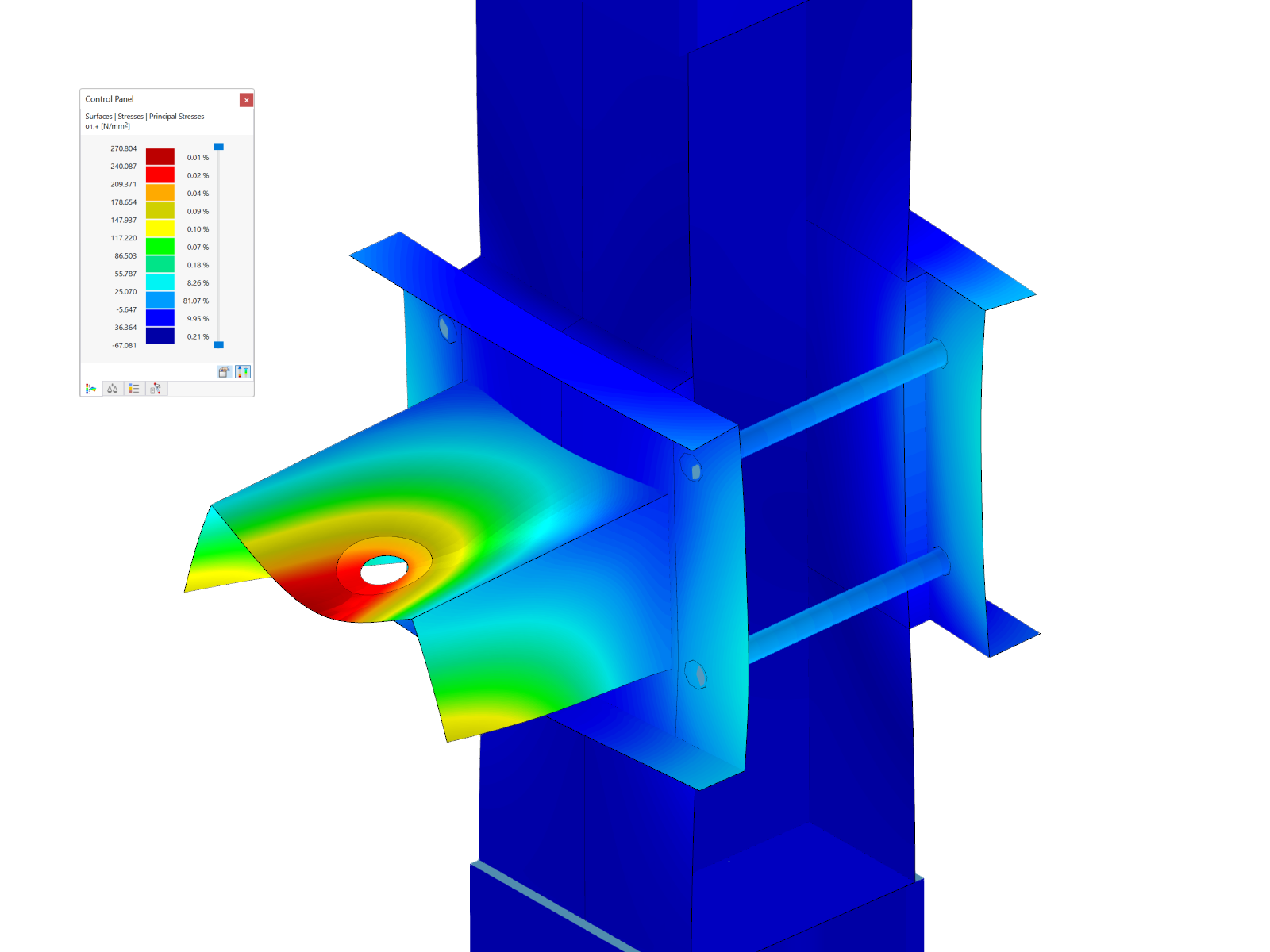
The Stress-Strain Analysis add-on performs general stress analysis by calculating the existing stresses and comparing them with the limit stresses.
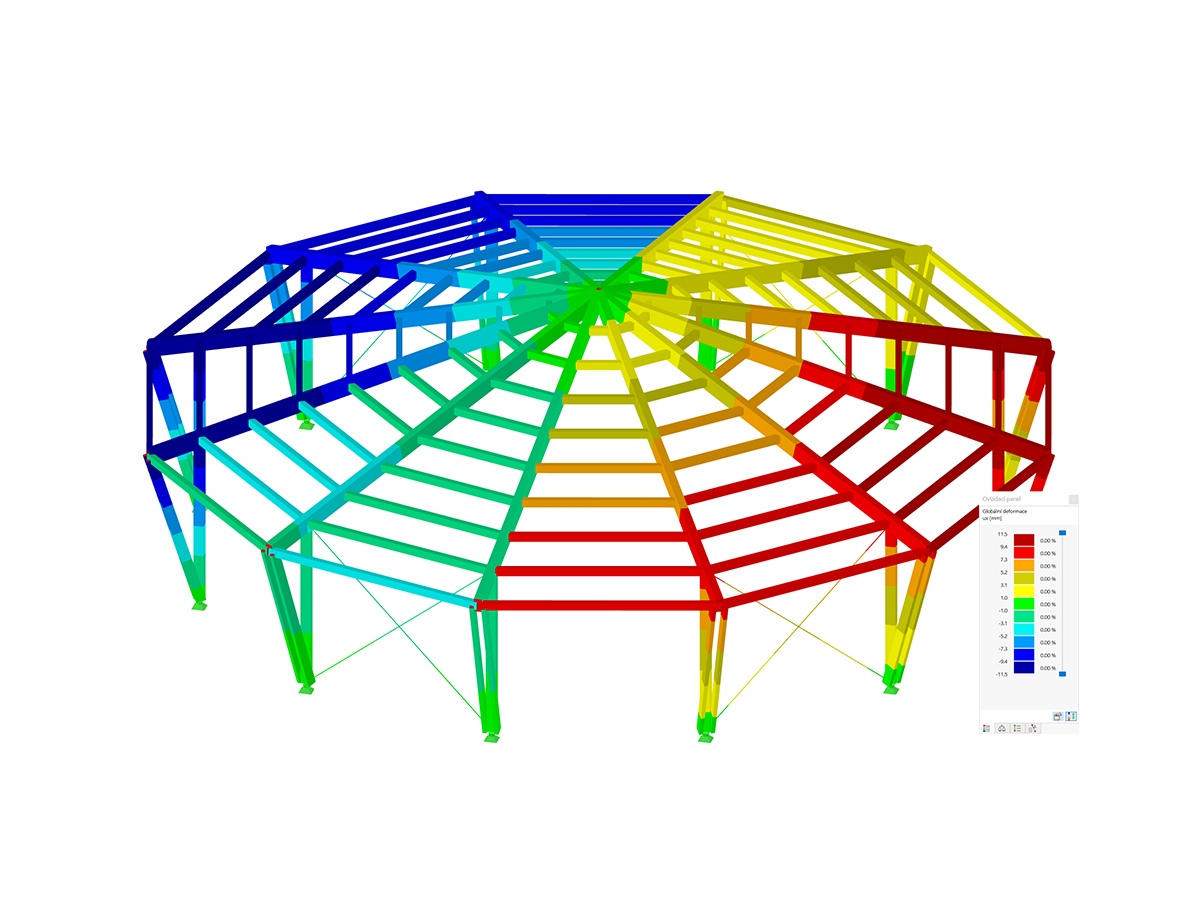
The modern 3D structural analysis and design program is suitable for the structural and dynamic analysis of beam structures as well as the design of concrete, steel, timber, and other materials.

The Steel Design add-on performs the ultimate and serviceability limit state design checks of steel members according to various standards.

The Structure Stability add-on performs the stability analysis of structures. It determines critical load factors and the corresponding stability modes.

The Stress-Strain Analysis add-on performs a general stress analysis by calculating the existing stresses and comparing them to the limit stresses.

The Torsional Warping (7 DOF) add-on allows for considering cross-section warping as an additional degree of freedom when calculating members.

The Modal Analysis add-on allows for the calculation of eigenvalues, natural frequencies, and natural periods for member, surface, and solid models.

Earthquakes may have a significant impact on the deformation behavior of buildings. A pushover analysis allows you to analyze the deformation behavior of buildings and compare them with seismic actions. Using the Pushover Analysis add-on, you can analyze the seismic actions on a particular building, and thus assess whether the building can withstand the earthquake.
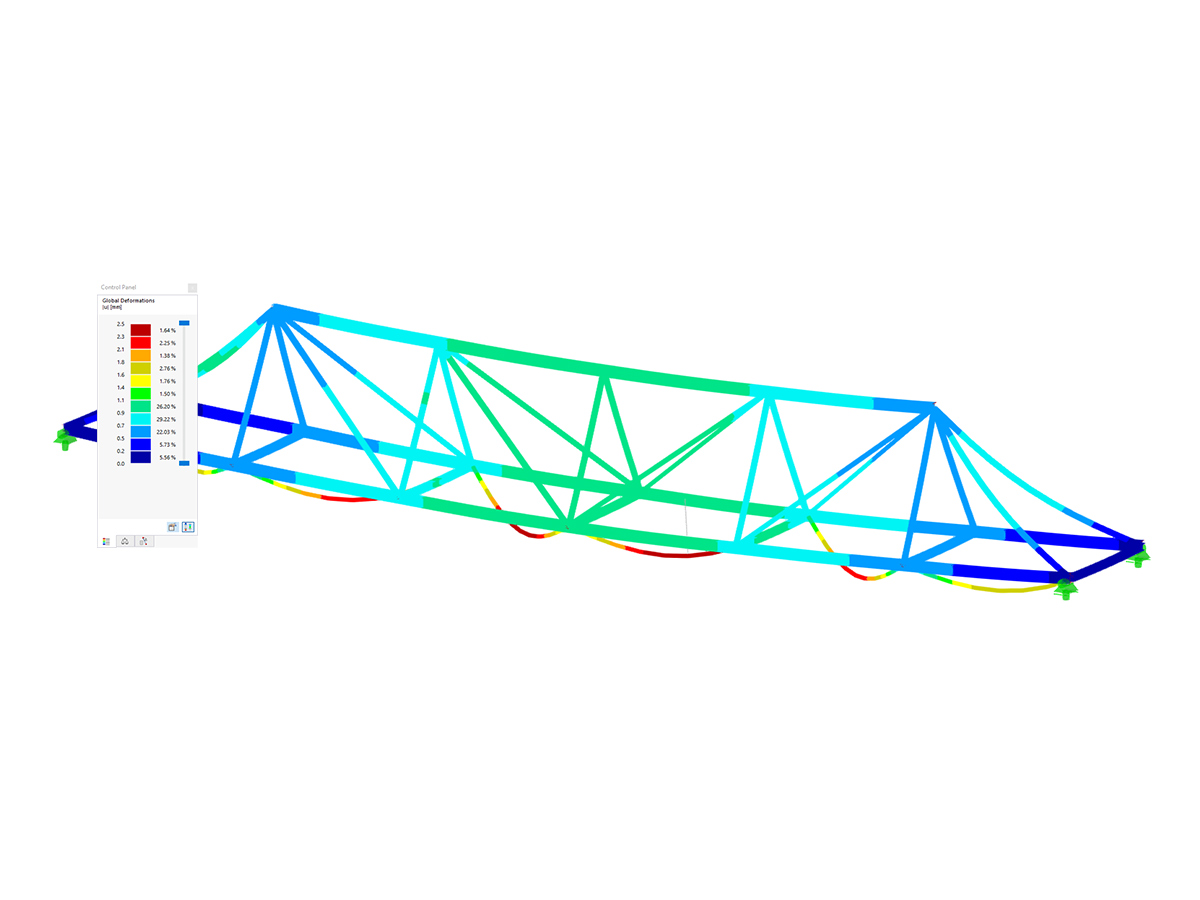
The Response Spectrum Analysis add-on performs seismic analysis using multi-modal response spectrum analysis. The spectra required for this can be created in compliance with the standards or can be user-defined. The equivalent static forces are generated from them. The add-on includes an extensive library of accelerograms from seismic zones that can be used to generate the response spectra.

The Response Spectrum Analysis add-on performs seismic analysis using the multi-modal response spectrum analysis. The spectra required for this can be created in compliance with the standards or can be user-defined. The equivalent static forces are generated from them. The add-on includes an extensive library of accelerograms from seismic zones that can be used to generate response spectra.

Modeling piping systems

Piping design and pipe stress analysis

Structural engineering software for a finite element analysis (FEA) of planar and spatial structural systems consisting of plates, walls, shells, members (beams), solids, and contact elements
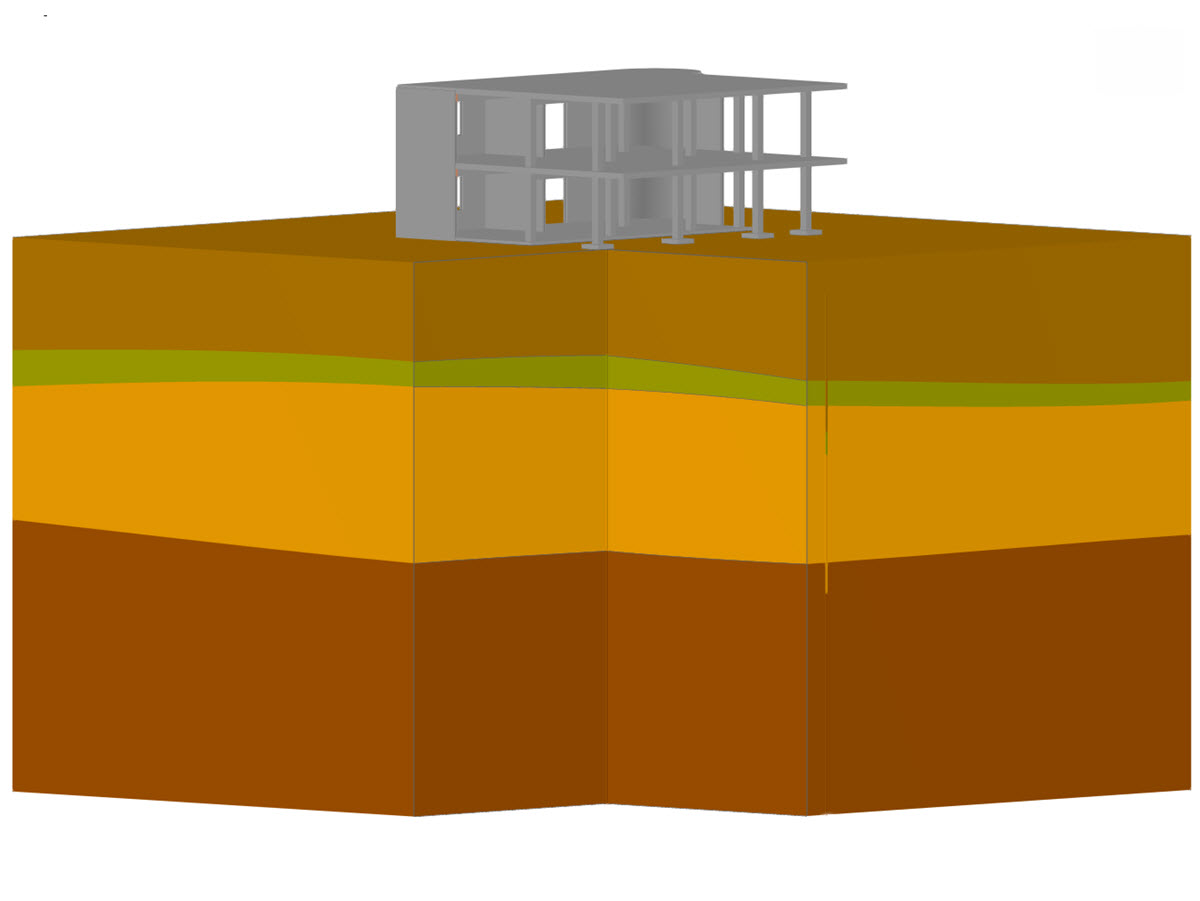
In RFEM, the Geotechnical Analysis add-on uses properties from soil samples to determine the soil body to be analyzed. The accurate determination of soil conditions significantly affects the quality of the structural analysis of buildings.
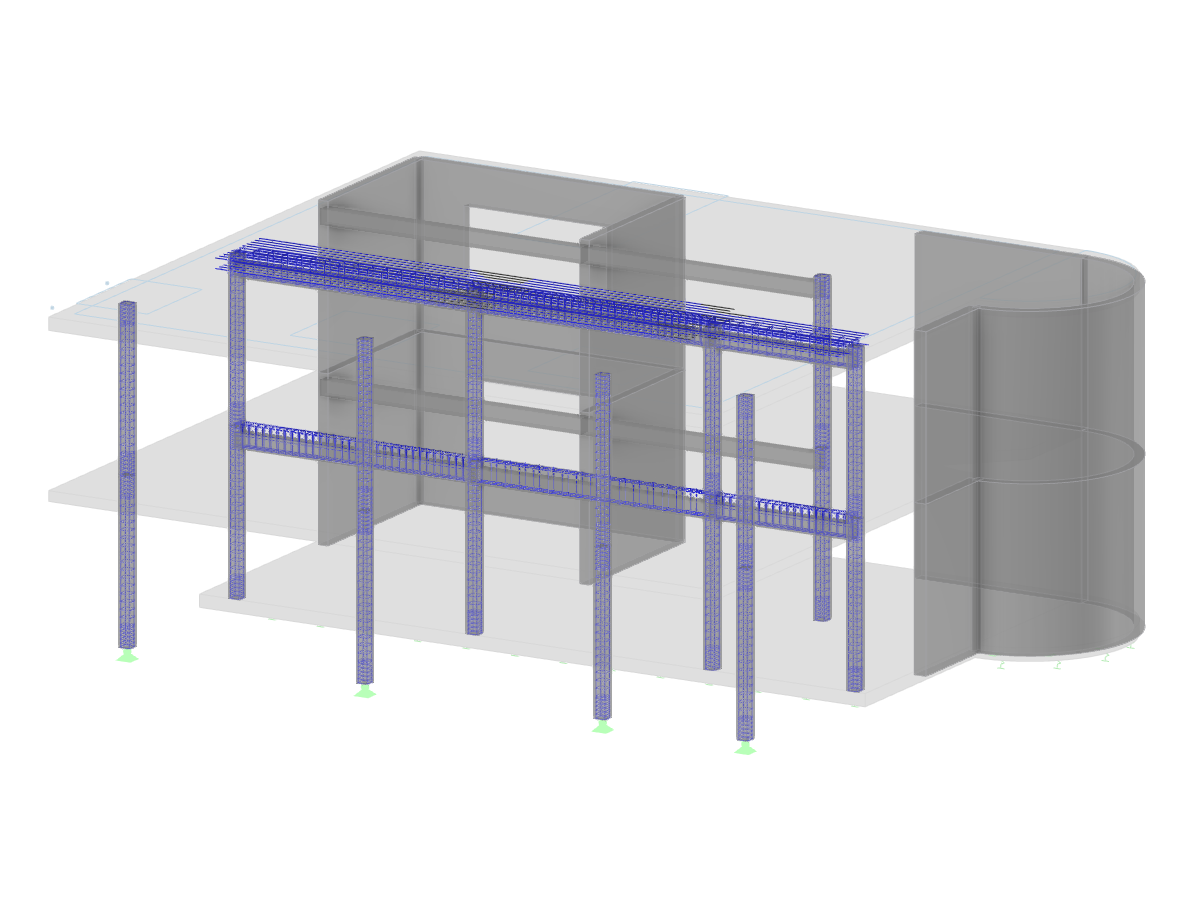
The Concrete Design add-on allows for various design checks according to international standards. You can design members, surfaces, and columns, as well as perform punching and deformation analyses.

Webservice is a programmable interface for RFEM and RSTAB. The interface is based on standard technologies. The RFEM and RSTAB programs provide a server service that can be used locally or via the network. This service can be used to read and write data from RFEM/RSTAB. SOAP is used for client-server communication.

Concrete Design add-on allows for various design checks of members and columns according to international standards.
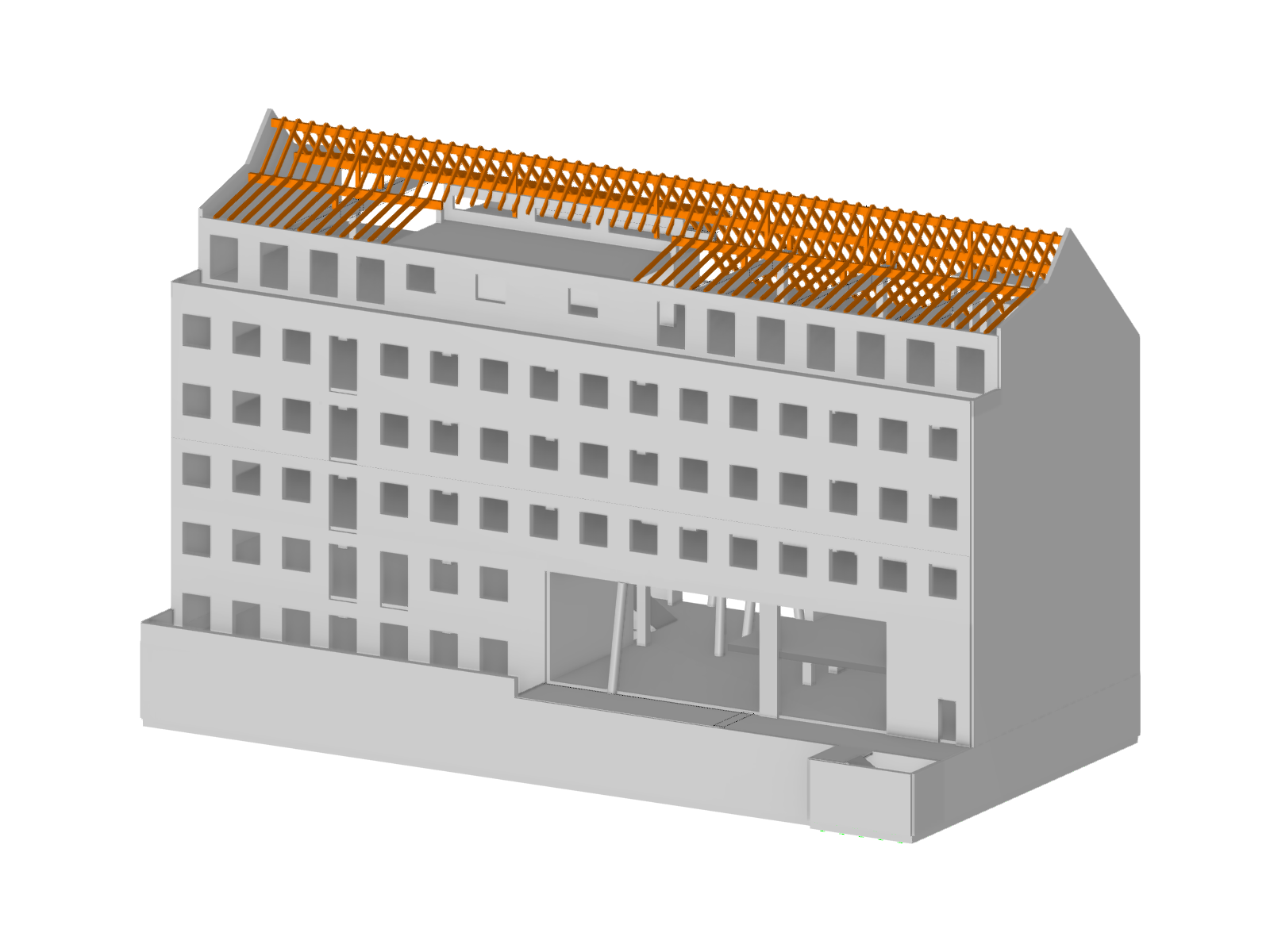
The two-part Optimization & Costs / CO2 Emission Estimation add-on finds suitable parameters for parameterized models and blocks via the artificial intelligence (AI) technique of particle swarm optimization (PSO) for compliance with common optimization criteria. Furthermore, this add-on estimates the model costs or CO2 emissions by specifying unit costs or emissions per material definition for the structural model.

The two-part Optimization & Costs / CO2 Emission Estimation add-on finds suitable parameters for parameterized models and blocks via the artificial intelligence (AI) technique of particle swarm optimization (PSO) for compliance with common optimization criteria. Furthermore, this add-on estimates the model costs or CO2 emissions by specifying unit costs or emissions per material definition for the structural model.

The stand-alone program RSECTION determines the section properties for any thin-walled and massive cross-sections.

Plastic design of cross-sections according to the Partial Internal Forces Method (PIFM) and Simplex Method

Fatigue design of members and sets of members according to EN 1993-1-9

Generation of geometrically complex 3D tower structures, such as lattice towers and radio masts

Generation of the equipment for lattice towers of mobile operators

Generation of the wind, ice, and variable loads for lattice towers

Determination of effective lengths for lattice towers

Design of triangular and quadrilateral lattice towers according to the European standards

Design of nominally pinned bolted connections of members used in lattice towers according to Eurocode 3

Structural engineering software for design of frame, beam, and truss structures, as well as for linear and nonlinear calculations of internal forces, deformations, and support reactions

Fatigue design of members and sets of members according to EN 1993-1-9

Plastic design of cross-sections according the Partial Internal Forces Method (PIFM) and Simplex Method

Generation of geometrically complex 3D tower structures, such as lattice towers and radio masts

Generation of equipment for lattice towers of mobile operators

Generation of wind, ice, and variable loads for lattice towers

Determination of effective lengths for lattice towers

Design of triangular and quadrilateral lattice towers according to the European standards

Design of nominally pinned bolted connections of members used in lattice towers according to Eurocode 3
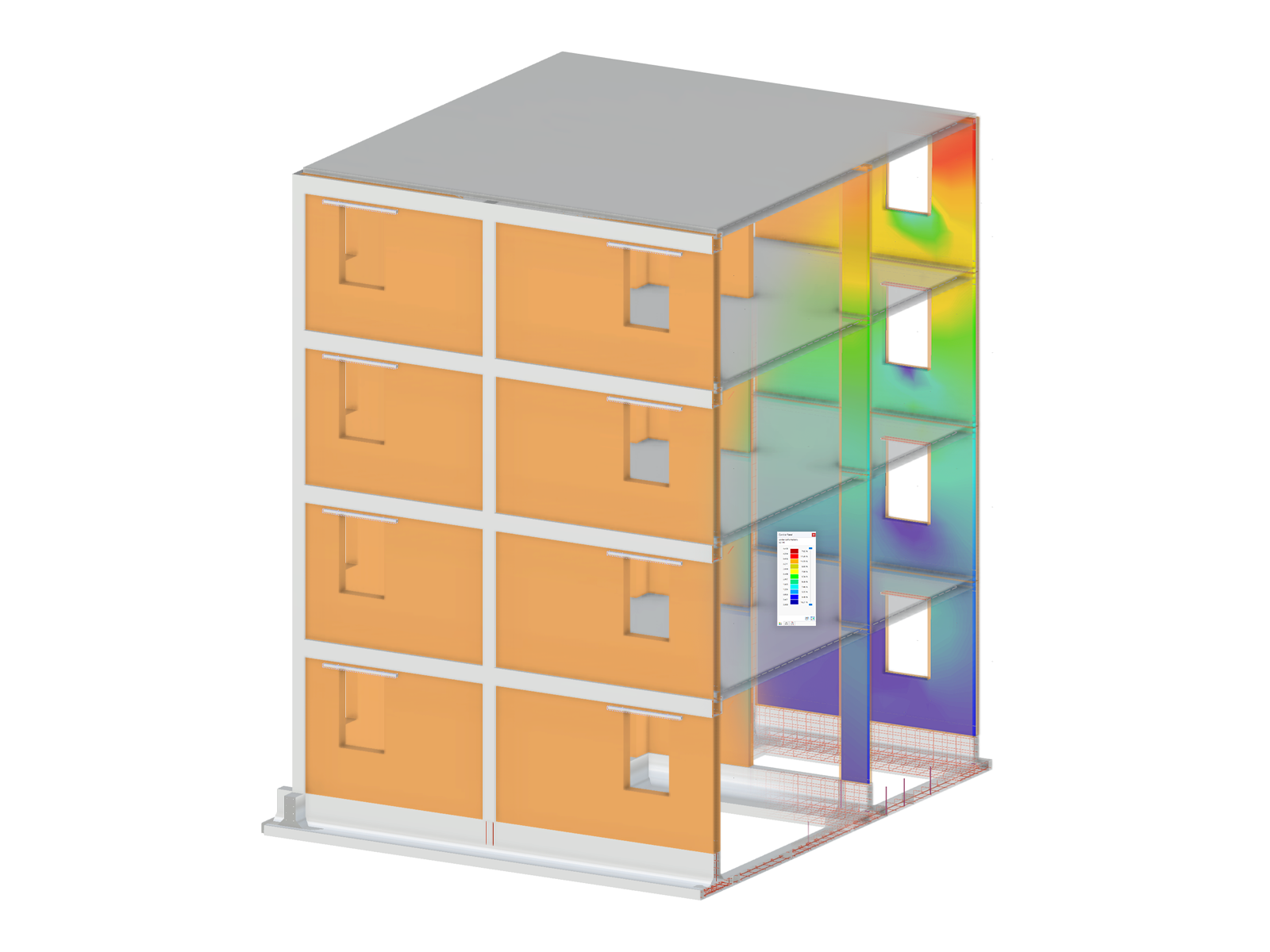
The Masonry Design add-on for RFEM allows you to design masonry using the finite element method. It was developed as part of the research project titled DDMaS – Digitizing the Design of Masonry Structures. The material model represents the nonlinear behavior of the brick-mortar combination in the form of macro-modeling.
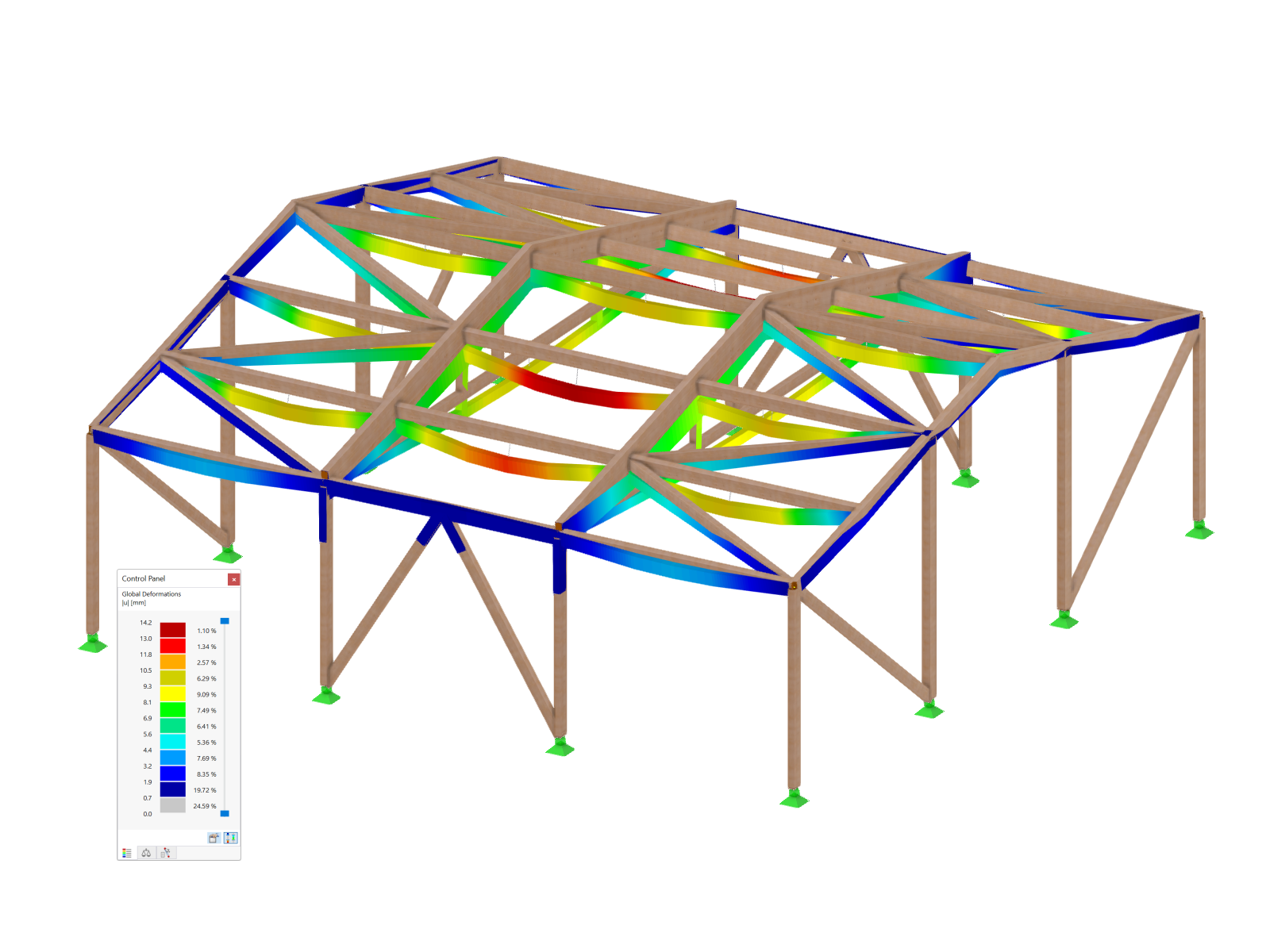
The Timber Design add-on performs the ultimate, serviceability, and fire resistance limit state design checks of timber members according to various standards.

The Timber Design add-on performs the ultimate, serviceability, and fire resistance limit state design checks of timber members according to various standards.
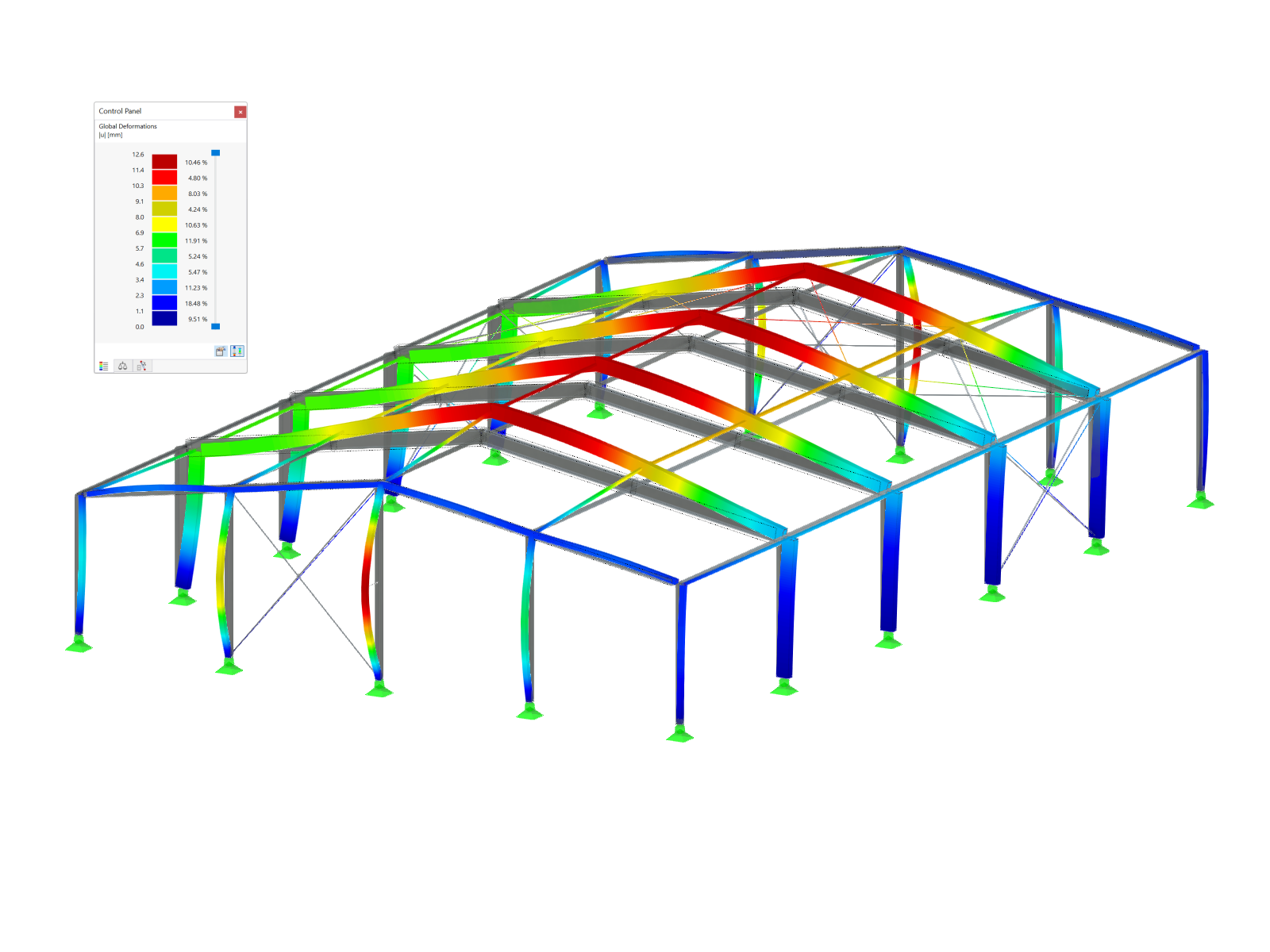
The Aluminum Design add-on performs the ultimate and serviceability limit state design checks of aluminum members according to various standards.

The Aluminum Design add-on performs the ultimate and serviceability limit state design checks of aluminum members according to various standards.











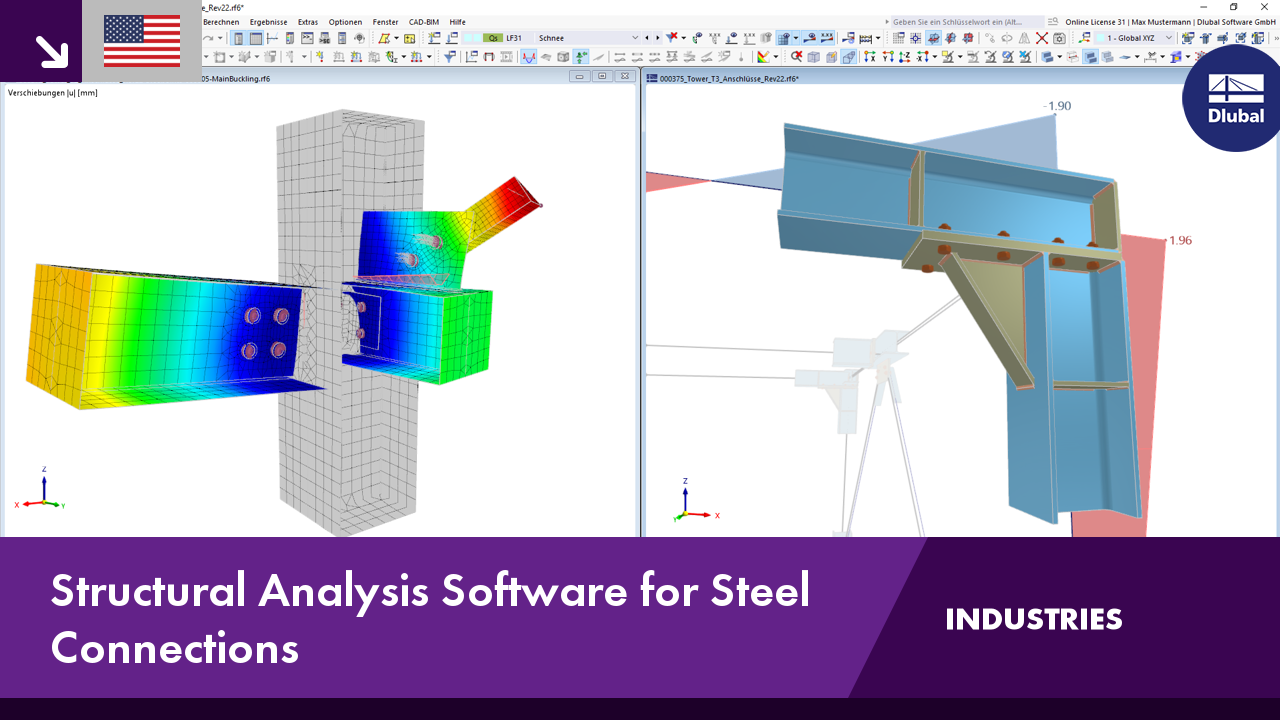.png?mw=350&hash=c6c25b135ffd26af9cd48d77813d2ba5853f936c)



























_1.jpg?mw=350&hash=ab2086621f4e50c8c8fb8f3c211a22bc246e0552)




